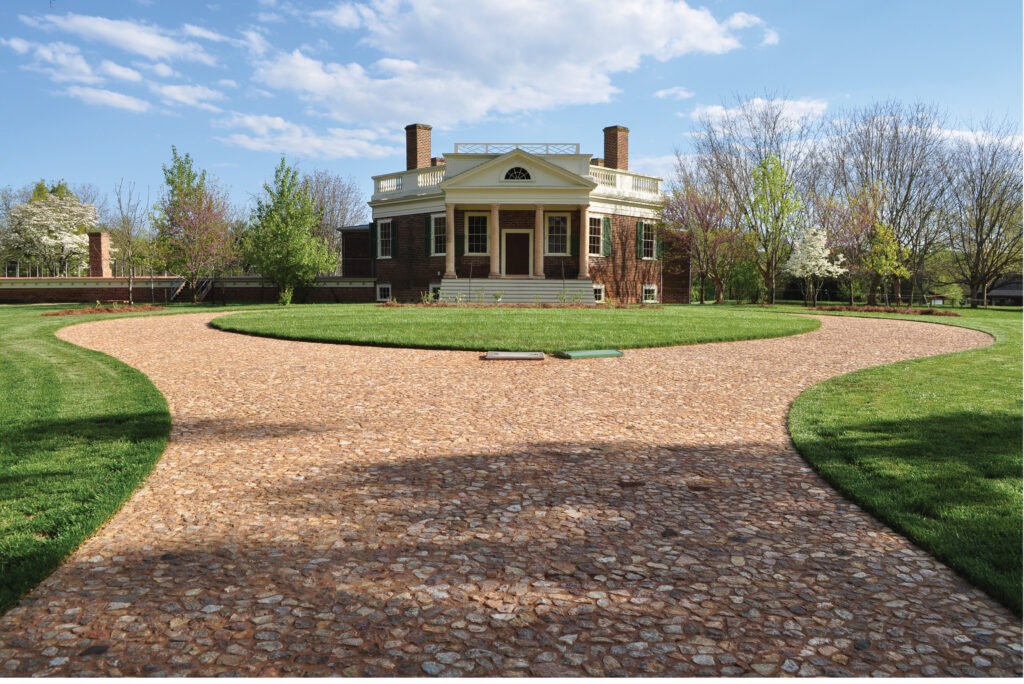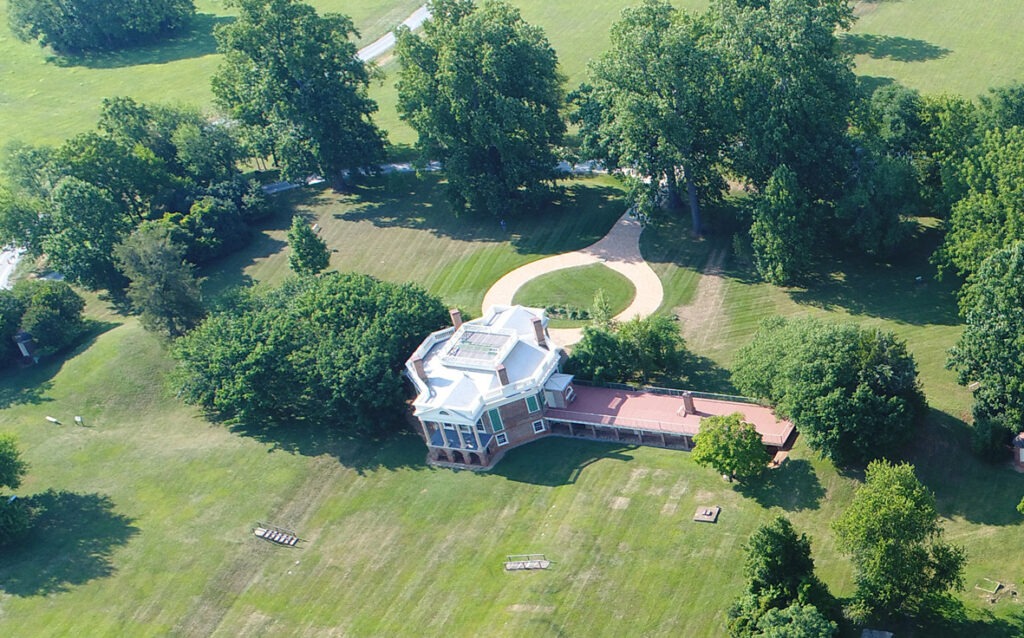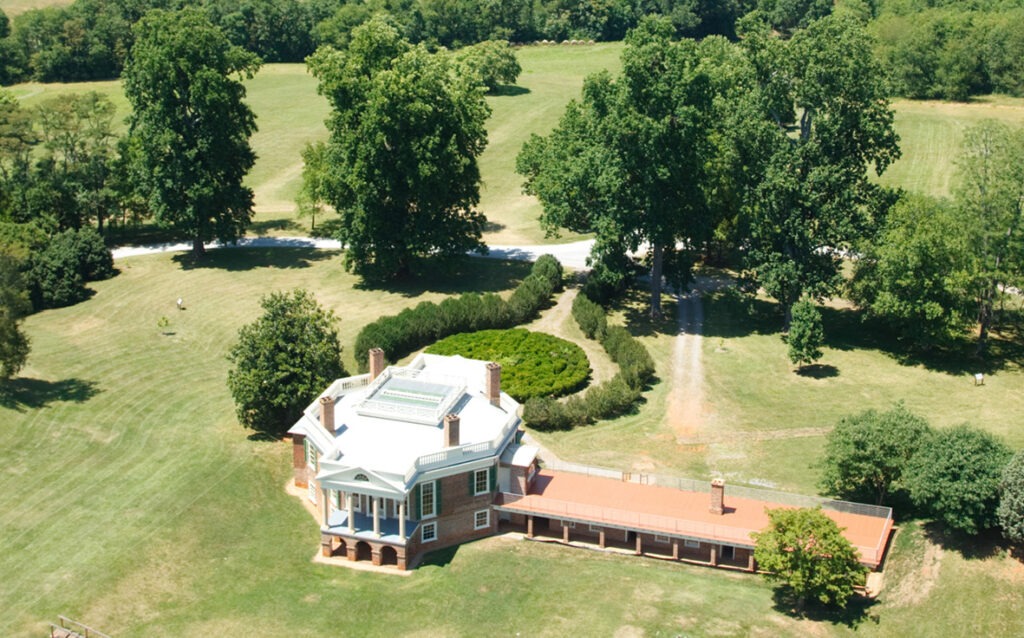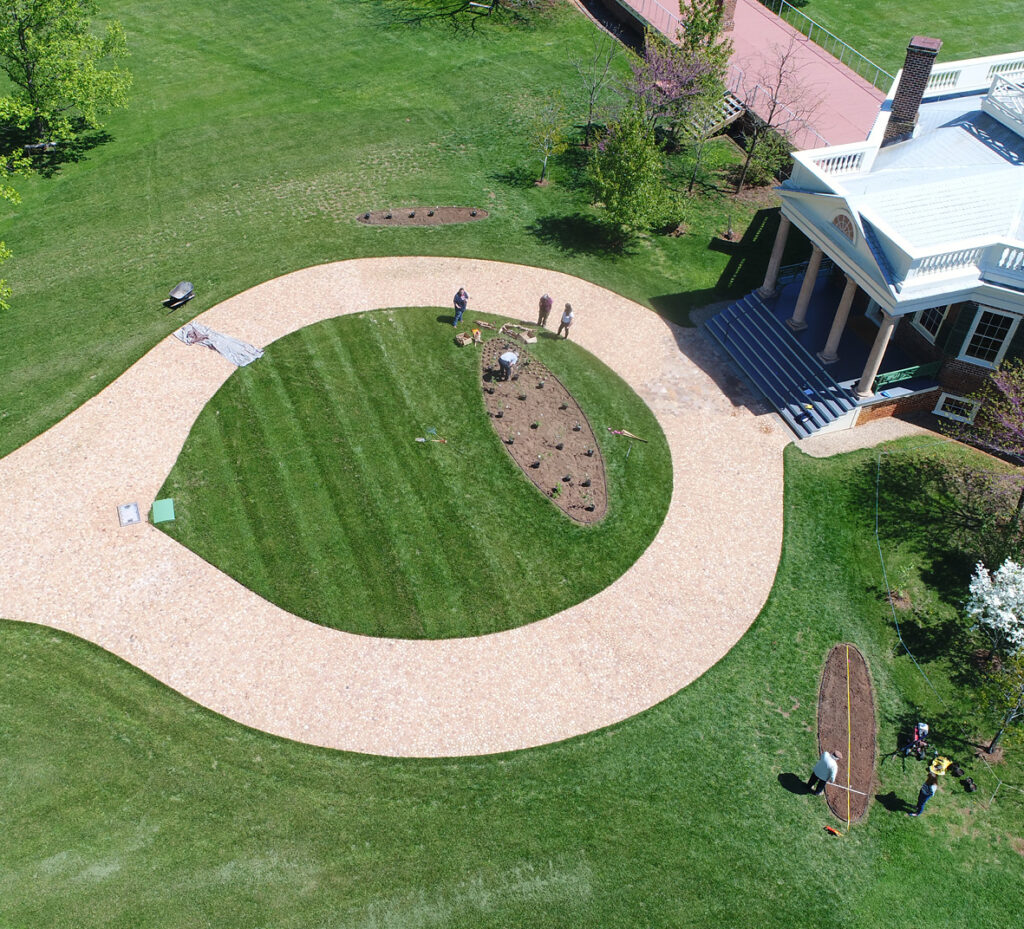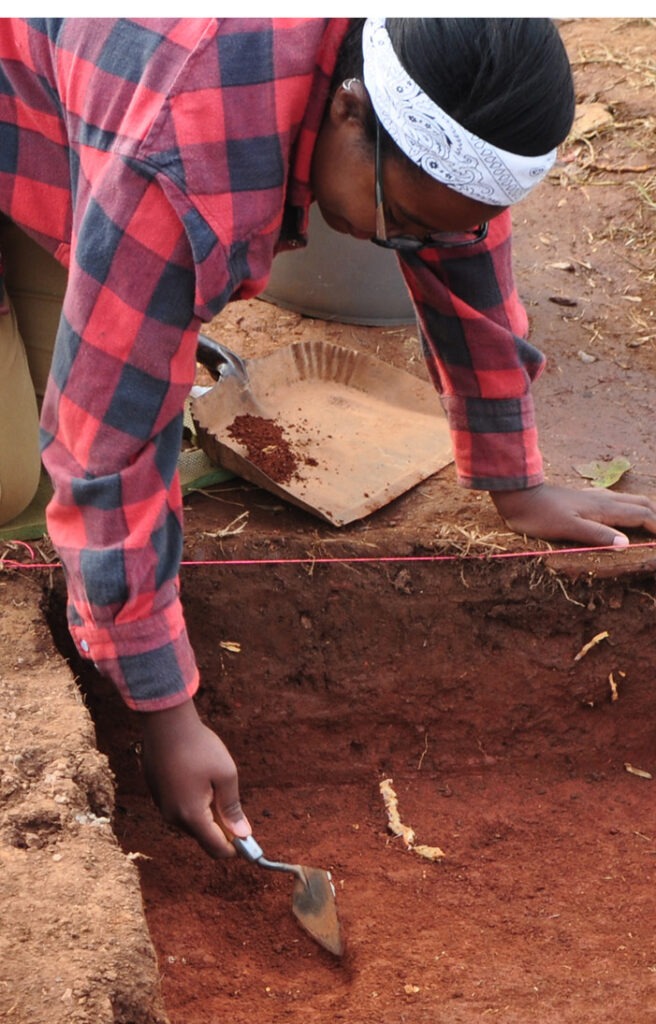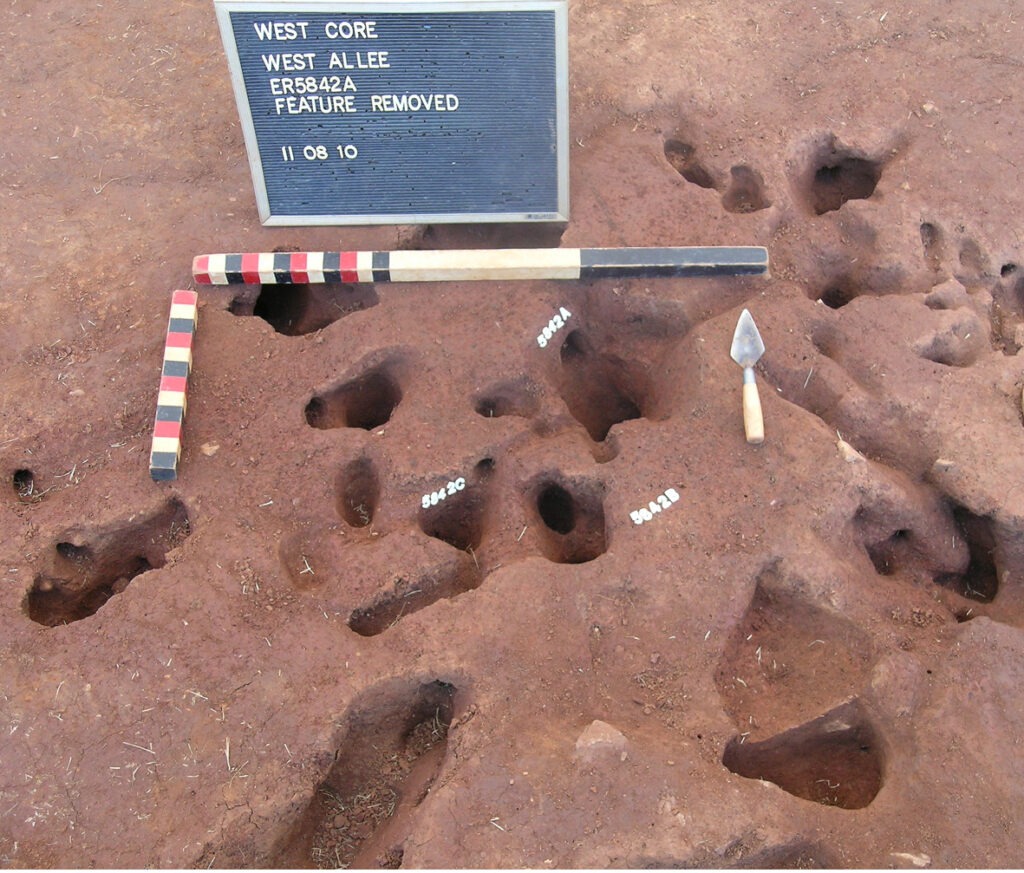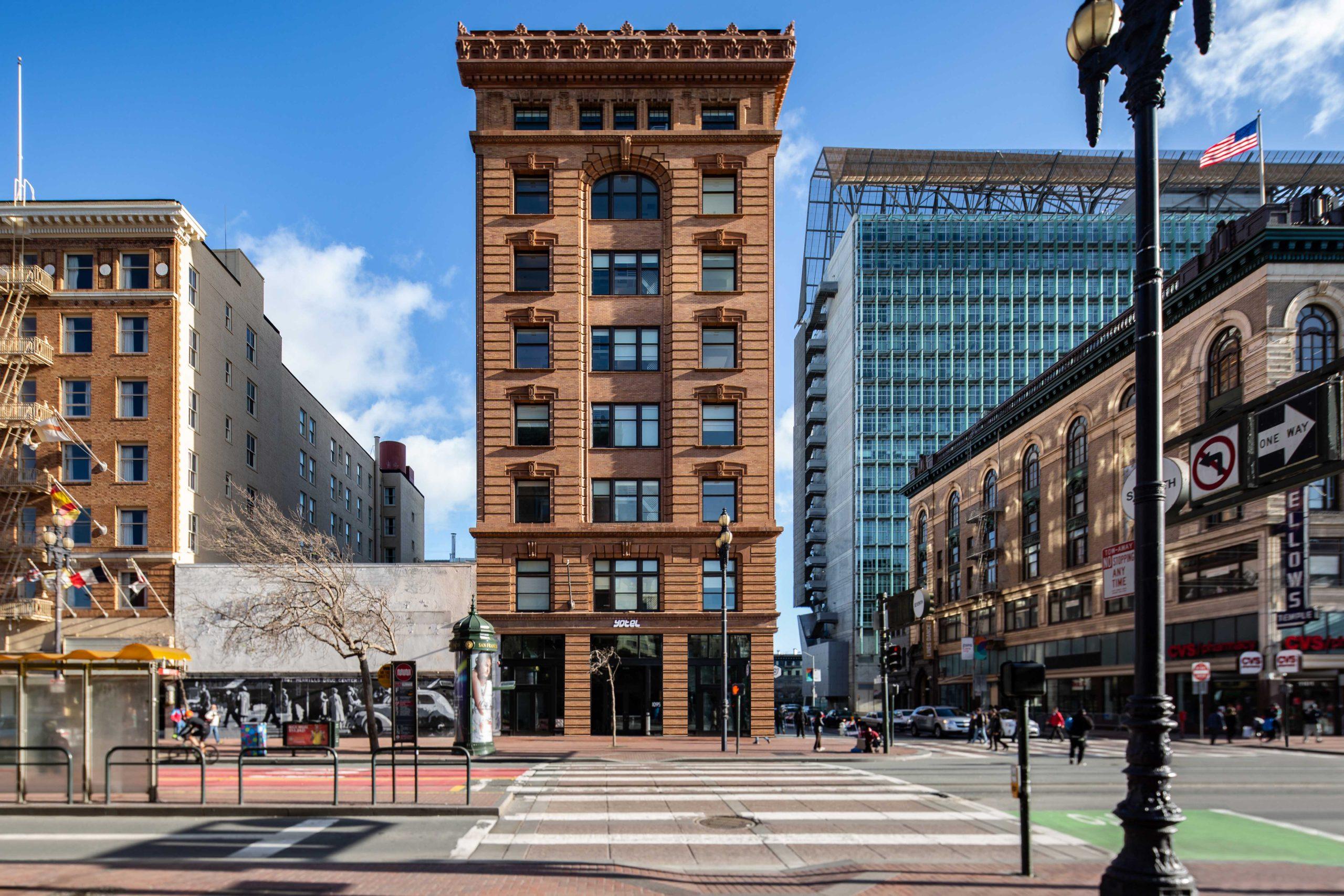Here we have Part I of a two-part post I wrote on the restoration of the landscape at Thomas Jefferson’s Poplar Forest in Bedford County, Virginia. This feature-length article appeared in a recent issue of the Virginia Sportsman magazine:
Decades in the making, the first phase of the revitalization of Thomas Jefferson’s landscape at Poplar Forest is now complete.
Since the late 1980s, a team of archeologists and landscape architects has worked to uncover, restore and preserve the grounds of the third president’s retreat in Bedford County.
Jefferson, a master architect, saw no difference between the built environment and landscape elements. “He thought of them on equal terms, despite their differences,” says landscape architect Will Rieley, founding principal of Charlottesville-based Rieley & Associates.
Jefferson mingled both at Poplar Forest from 1806 until a few years before his death in 1826. He used them to design and build the rural villa he gleaned in part from Andrea Palladio’s “Four Books of Architecture.” Palladio was Jefferson’s 16th-century architect of choice, though he relied also on contemporary British interpretations of the Italian’s work.
“Conceptually, it’s valid to think of Poplar Forest as a five-part Palladian house, but he uses landscape elements for four of the five parts,” Rieley says. “The brick-and-mortar octagonal house is the only architecture itself—and there are two hyphens [connectors] to two mounds.”
The mounds rise 12 feet in height and consist of dirt dug by enslaved laborers from the cellar of the house and its south lawn. They moved the dirt to create end pavilions 120 feet from the east and west sides of the home. The home was connected to its end pavilions by its hyphens—two parallel rows of four paper mulberry trees on each side.
Jefferson would eventually remove the southern half of the double row of trees on the east and replace it with a brick-and-mortar wing, while the western side retained its double row of trees. In a bold fusion of architecture and landscape, he topped the mounds with willow trees and surrounded them with aspens. The willows were intended to form a rounded dome, while the lightly colored aspens would mimic columns.
Rieley was laser-focused on Poplar Forest’s restoration from 2010 to 2023 while he was landscape architect for the Garden Club of Virginia, the project’s major partner and source of funding. But his work on the retreat preceded that. “In the mid-nineties, we worked with then-Poplar Forest archaeologist Barbara Heath to analyze mapping that showed the various parcels that Jefferson acquired and dispensed with over the years,” he says.
After Jack Gary was named director of archeology and landscapes at Poplar Forest in 2006, he and Rieley began in earnest to restore key elements of Jefferson’s landscape design in 2009. They started with the western double row of paper mulberries—first conducting an archeological dig to locate traces of the original trees. “The archaeological excavations discovered exactly where the trees were, revealing that they were aligned and spaced in a way that would allow future wings to fit in between,” Gary says. “We had to understand Jefferson as a landscape designer.”
The double row of paper mulberries was replaced in 2011, exactly 200 years after Jefferson planted them. The landscape architects followed his design precisely. Where he’d run out of paper mulberries and substituted a European mulberry, they did the same. “Will and I wanted to make it as accurate as possible,” he says.
In 2018, when Gary left Poplar Forest to become director of archeology at the Colonial Williamsburg Foundation, Eric Proebsting, senior research archeologist, moved up to take his place. Before he left, Gary and Proebsting had discovered the remains of four spiral-shaped clumps of landscape plantings on the north and south sides of the house. Rieley & Associates then collaborated on the analysis of the geometric pattern of the clumps and worked with the Garden Club of Virginia to replant them on the north side; more research is needed for those on the south side.
The spirals are 33 feet across, a measurement that was initially foreign to both Gary and Proebsting. “It was the length of the surveyor’s chain that Jefferson was using,” Proebsting says. “In an 1812 note from a friend, Charles Clay, he sends Jefferson for his use a surveyor’s chain—and Jefferson was using it personally.”
The spiral clumps were planted with native North American species—Tulip Poplars, Black Locusts, Athenian and Balsam Poplars, Kentucky Coffees, Dogwoods, Redbuds and Calycanthus. “He was giving different levels of what you’d see in a fully developed forest,” he says. “They would bloom at different times and mature in different spaces in that landscape element.”
Tomorrow: The role of African enslaved workers in creating an architectural and landscaped gem at Poplar Forest.
For more, go here.

